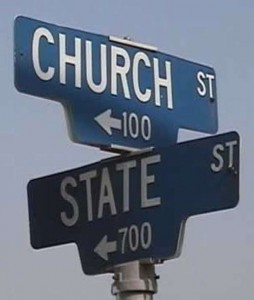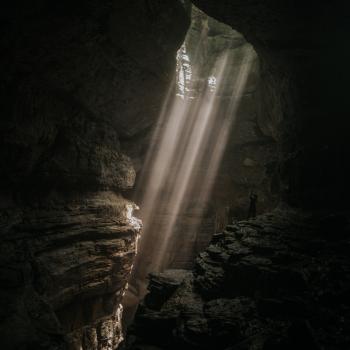 The topic, at the Eighth Day Institute symposium in Wichita, Kansas, was how to regain our sense of wonder in a secular age. It might have been a discussion—and in some ways it was—about restoring any number of treasures in the face of an advancing secularism.
The topic, at the Eighth Day Institute symposium in Wichita, Kansas, was how to regain our sense of wonder in a secular age. It might have been a discussion—and in some ways it was—about restoring any number of treasures in the face of an advancing secularism.
Secularism, which many of us have come to equate with a state of widespread unbelief, but which philosopher Charles Taylor argues, in A Secular Age, is more a state of many beliefs, undergirded by the conviction that all is open to doubt.
The question when considering secularism, then, is not (at least yet) how the West abandoned the City of God for the spiritual wilderness from which St. Paul reminded the Ephesian Christians they had been delivered: “strangers from the covenants of promise, having no hope and without God in the world.” The question is, rather, how we came to view faith (or its absence) as a choice to be approached individually and intellectually.
Sort of intellectually, anyway, for if Friedrich Hayek was right that most intellectuals are “secondhand dealers in ideas,” what does that make the rest of us? But we imagine, at least, that our intellects do the work—and more important for Taylor’s thesis, we inhabit a world in which it is possible to choose, and further, to choose from all manner of beliefs, skepticisms, and novelties.
New England Patriots quarterback Tom Brady recently stumbled through the spirit of the age when a reporter asked about a menorah in his kitchen: “We’re not Jewish. But I think we’re into everything…I don’t know what I believe. I think there’s a belief system, I’m just not sure what it is.”
There’s something there, and Brady might even decide to believe it once he figures it out. The benefit of a secular age, at least for a Super Bowl quarterback married to a supermodel, is that you can believe whatever you want. Most of us choose to exercise a little more intellectual consistency, but all of us are conscious of choosing to believe or disbelieve.
This is because the certainty of an active God working within the stuff of creation has left us. Most of us no longer believe that we can be inhabited by God or devils, that miracles spring from the icons of saints, that a Good Friday falling on April 18, as Taylor observes, is closer to the historical moment of Christ’s crucifixion than it is to April 19.
The sense of mystery’s presence has been replaced by scientific principles, linear time, apologetics that make the logical case for Christ.
The slow corrosion of mystery commenced around the time clever men started pondering angels on pinheads, followed a few centuries later by rational men afraid someone might worship those angels, or if not them then icons or even the Eucharist.
And these were succeeded in subsequent centuries by self-reliant men who asked: “What good are angels anyway, and what have they done for us in comparison to the pin itself, the printing press and the piston, the lathe and latex?”
So we exchanged Immanuel for a distant clockmaker operating according to divine but discernible principles—what Taylor calls an “excarnation.”
As we plumbed these principles—and as they fortuitously aligned themselves with good hygienic community and a well-functioning marketplace—our position in the clock became ever more prominent—man as steward, man as self-improver, man as creator.
We subjected God to systematic principles and stuffed him into a textbook, we made a good Christian life entirely synonymous with good citizenry, made miracles something historical and largely past, made all of ourselves saints and hence no one a saint, made revelation a personal thing, but within bounds.
If God tells you to sell all your possessions and go wear camel hair in the desert, you’re probably a loon. He works in mysterious ways, but in ways that comport with our sense of good Christian decorum.
Little wonder so many people said to hell with it. Many dispensed with God altogether, for what need have we of this benevolent sky-being when there are hungry mouths to be fed, and industry to be managed? Isn’t he simply a proponent of principles for better living—with so many of these principles, if we’re honest with ourselves, suppressing the very instincts that make us most alive and happy in our humanity?
So we leached the mystery from creation, but we couldn’t scrape it off our skin entirely. We are mystery-seekers—something theologian James K.A. Smith noted during the conference. He didn’t mean that the way some sentimental non-denominational warehouse preacher might mean it; we don’t walk about with God-shaped holes in our hearts until we’re lured into just the right worship service and handed the missing Jesus puzzle piece that fits perfectly.
Neither our wounds nor the prescription is that simple—especially in a secular age.
But the wound is there, and maybe that’s what will save us. We move through the world our intellectual forefathers shattered, and we do so with a sense of loss, and of longing, and by this we know something’s missing.
Pervasive secularism means that the faithful are haunted by doubt, but remember, says Smith, that “unbelievers are also tempted by faith.”
That’s a good place to begin a conversation, if you think about it, provided believer and non-believer alike are honest enough to admit their doubts, and beneath these their longing. For many, that’s the last mystery that remains—how we could pine for someone unnamed in the midst of unprecedented intimacy, how we could ache so irrationally in an age of reason.
Tony Woodlief lives in North Carolina. His essays have appeared in The Wall Street Journal and The London Times, and his short stories appeared in Image, Ruminate, Saint Katherine Review, and Dappled Things. His website is www.tonywoodlief.com.
Picture above found under wikimedia, used through Creative Commons License.











